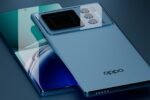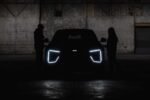Coins often pass through our hands without a second thought, but some might be secretly worth a small fortune. Take the Bicentennial quarter, for example. While millions of these coins were produced to celebrate America’s 200th anniversary, only a select few possess rare features that make them incredibly valuable. In fact, the combined worth of just eight of these special quarters could add up to a staggering $270 million.
What is a Bicentennial Quarter?
The Bicentennial quarter was issued in 1975 and 1976 to mark 200 years since the signing of the Declaration of Independence. These quarters are easily recognizable, as they feature a special reverse design that includes a colonial drummer, a torch, and 13 stars—representing the original 13 colonies. The coin also has the dual date “1776–1976,” distinguishing it from standard U.S. quarters. While most of these quarters were mass-produced and circulated widely, their historical design and unique features make them special.
Why Are Some Bicentennial Quarters So Valuable?
While the majority of Bicentennial quarters are worth only 25 cents, certain coins have rare characteristics that can significantly increase their value. These special features can include minting errors, proof quality strikes, rare metals like 40% silver, or exceptionally well-preserved (uncirculated) conditions. Only a small number of these coins were made with these unusual qualities, which makes them highly prized by collectors. In some cases, a single coin can be worth thousands, even millions, of dollars.
How Minting Errors Increase Value
Minting errors are essentially mistakes that occur during the production of coins, and these mistakes are highly valued by numismatists. Common types of errors include:
- Doubled dies: Where the design appears more than once due to a misalignment in the die.
- Off-center strikes: When the design is stamped in the wrong position.
- Missing elements: Where part of the design is missing due to an issue with the die.
- Wrong metal planchet: When the coin is struck on the wrong type of metal, such as silver instead of the usual copper-nickel alloy.
The rarer and more noticeable the error, the higher the coin’s potential value. For Bicentennial quarters, any major minting mistake can make the coin highly desirable to collectors.
The Silver Bicentennial Quarters: Why They’re Important
Not all Bicentennial quarters were made from the standard copper-nickel alloy. A select batch was struck in 40% silver, primarily for collector sets sold by the U.S. Mint. Some of these silver quarters accidentally entered general circulation, which makes them even more valuable. Silver coins are slightly heavier and have a different shine compared to their copper-nickel counterparts, making them easier to identify with the right tools.
If you find a silver Bicentennial quarter, especially one with a rare error or in excellent condition, you could be holding a coin worth much more than its face value.
How to Determine If Your Bicentennial Quarter Is Valuable
If you think you may have a rare Bicentennial quarter, here are a few steps to help you determine its potential value:
- Check the Mint Mark: Look for a mint mark on the coin. “D” stands for Denver, “S” stands for San Francisco, and no mint mark usually indicates it was minted in Philadelphia.
- Examine the Condition: Coins in uncirculated or mint condition are generally worth more. Any signs of wear can reduce its value.
- Look for Silver: Silver Bicentennial quarters can be identified by their weight and appearance. They typically have an “S” mint mark and were sold in special sets.
- Inspect for Errors: Look for signs of minting errors, such as doubled letters, missing elements, or misalignment in the design. If the coin has a major error, it could be worth much more than its face value.
To get an accurate assessment, consider sending the coin to a professional grading service like PCGS or NGC for a proper evaluation.
Real-Life Discoveries: From Pocket Change to Paydays
Over the years, numerous people have found valuable Bicentennial quarters tucked away in old coin jars, inherited collections, or even in their everyday pocket change. These coins, often overlooked for decades, have been sold for thousands of dollars once their rare characteristics are discovered. In fact, rumors have circulated that the combined worth of the eight rarest Bicentennial quarters could reach up to $270 million. This highlights how something as small as a 25-cent coin can transform someone’s life overnight.
Why Collectors Are Watching Closely
As interest in rare coins continues to rise, collectors are keeping a close watch on Bicentennial quarters. With new finds popping up regularly and prices continuing to climb, these coins have become a central focus for numismatists. Whether due to their patriotic significance, historical value, or sheer rarity, Bicentennial quarters have earned a legendary status in the world of coin collecting.
A Fortune in Your Pocket?
The notion that a single quarter could be worth thousands—or even contribute to a $270 million collection—might seem like fantasy. However, for some lucky individuals, it’s very real. The Bicentennial quarter, a symbol of America’s 200th birthday, has become one of the most valuable and coveted coins in U.S. history. Whether you’re an avid collector or just someone with a coin jar, now might be the perfect time to take a closer look at your loose change. You could be holding a rare treasure.
FAQs
Are all Bicentennial quarters worth money?
No, most are worth only 25 cents. However, coins with rare features, such as minting errors, silver content, or exceptional condition, can be worth much more.
How do I tell if my Bicentennial quarter is silver?
Silver Bicentennial quarters are heavier and have an “S” mint mark. You can also compare them to a regular quarter or use a scale to confirm their weight.
What is the most valuable Bicentennial quarter?
Some rare error coins or silver-struck Bicentennial quarters in pristine condition have sold for over $100,000 each. The total value of the eight rarest examples is estimated to be around $270 million.




